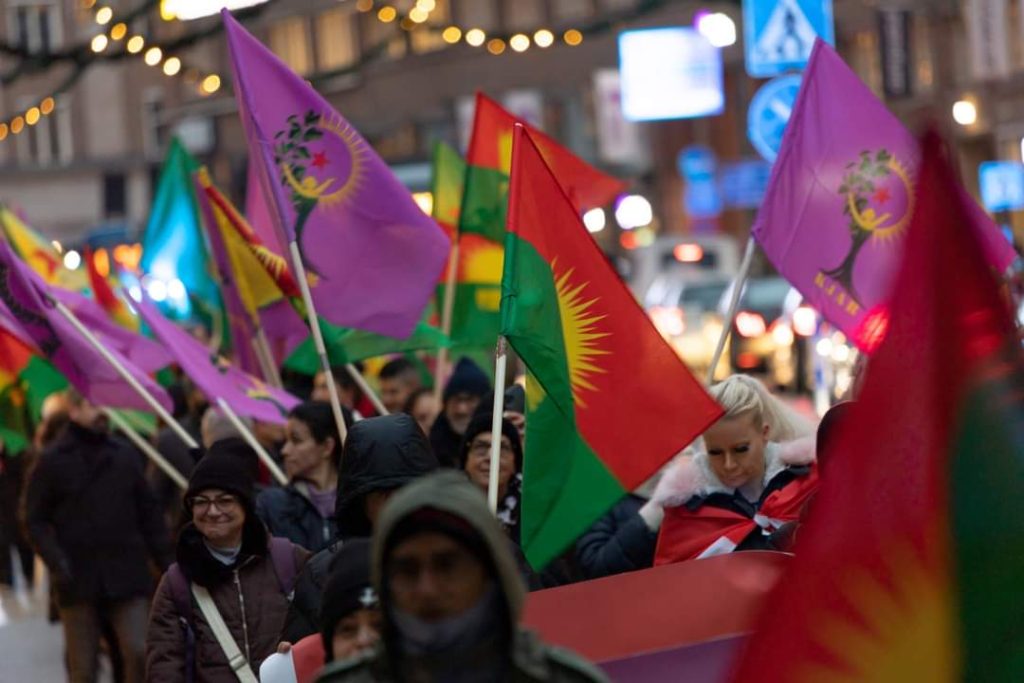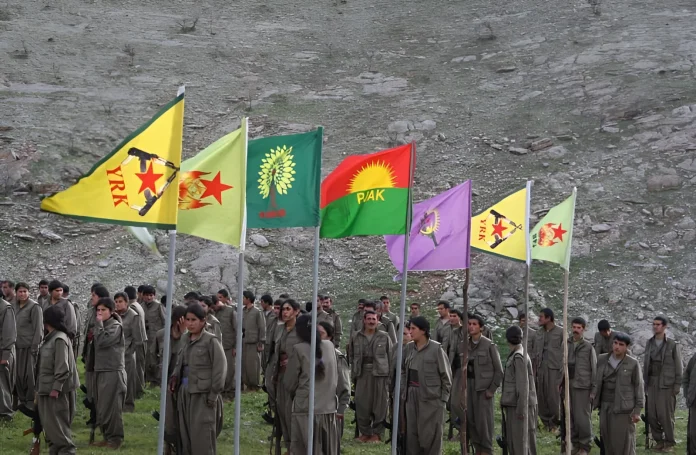An Analysis Based on Strategy, Networks, and Operational Depth
(Based on the report: “Ranking Iran’s Kurdish Opposition“, The National Context)
Of all the Kurdish parties in Iran, PJAK (the Kurdistan Free Life Party) is currently the most influential and powerful political-military force in Eastern Kurdistan. Despite being the youngest of the Kurdish opposition groups, PJAK’s combination of strategic depth, a robust operational infrastructure and ideological flexibility has made it the unrivalled Kurdish party confronting the Islamic Republic of Iran.
Benefiting from the PKK infrastructure: A Strategic Head Start
PJAK has enjoyed the benefits of the PKK’s well-established military and ideological network since its inception. With fortified bases in the Kurdistan Region of Iraq — from the Qandil Mountains to Hawraman — PJAK enjoys strategic proximity to Iran. With an estimated fighting force of around 3,000, coupled with access to seasoned PKK combatants from battlefronts in Turkey and Syria, PJAK is the largest and most combat-ready Iranian Kurdish group.
Active presence in the operational theatre
According to The National Context, between 2014 and 2025, PJAK was responsible for around 70% of all confirmed attacks by Kurdish groups against Iranian security forces, accounting for 81% of IRGC casualties in these incidents, despite officially being in a state of ceasefire with Tehran. These figures highlight not only PJAK’s superior operational capacity, but also the growing irrelevance of other Kurdish armed groups in Iran.
Crossing Sectarian and Linguistic Fault Lines
Iran’s Kurdish society is deeply divided along religious and linguistic lines: Sunnis, Shiites and Yarsanis, as well as Kurmanji, Sorani, Gorani and Fayli speakers. These divisions have traditionally prevented unity among Kurdish parties. However, PJAK has managed to bridge these gaps through the inclusive, pluralist ideology of the PKK. Notably, it has made inroads among Kurmanji speakers in Urmia, Khoy, and Maku, as well as among Sorani-speaking intellectuals and activists in cities such as Sanandaj.
Furthermore, PJAK is better placed than any other group to expand into Shia Kurdish regions such as Kermanshah and Ilam, which have historically been resistant to Kurdish insurgency. The PKK’s past success in organising minority Kurds, such as the Yazidis, and the leftist traditions of many Shia Kurds in places like Khanaqin align ideologically with PJAK’s secular revolutionary ethos.
Comparisons with Other Groups

While the Popular Front for the Liberation of Kurdistan (PJAK) has continued to grow, other Kurdish groups have declined or stagnated. The Kurdistan Democratic Party of Iran (KDPI), though historically significant, has not had an effective military presence since the 1990s, losing its border bases in the process. Komala is fragmented and lacks operational unity. Despite its visibility and external alliances (notably with Israel), the Kurdistan Freedom Party (PAK) lacks grassroots influence and has only carried out limited attacks inside Iran.
Conclusion
Based on The National Context’s in-depth analysis, PJAK is by far the most strategically potent Kurdish group in Iran. Its military strength, sociopolitical adaptability and deep entrenchment along the Iranian border give it a decisive edge. It is not just troop numbers that give PJAK the upper hand, but also its strategic infrastructure, resilient networks, and ability to evolve ideologically, positioning it as the leading party of Eastern Kurdistan at a time when the Islamic Republic is more vulnerable than ever.


